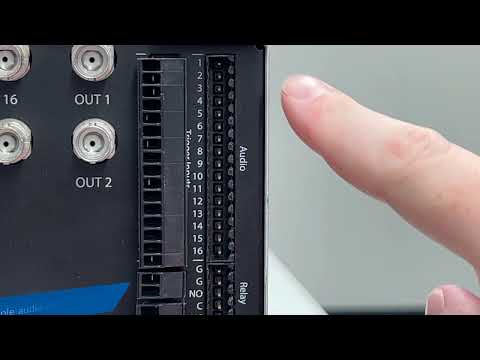exacqVision Hybrid s7eDVR Driver^Version 7.14.0.116994^https://www.exacq.com/reseller/s7eDVR-Setup_x64.exe^31 July 2017^4.3MB,
Category: exacqVision Hardware
ExacqVision Hybrid tDVR Driver
exacqVision Hybrid tDVR Driver^Version 1.3.5.129409^https://www.exacq.com/reseller/tdvr-Setup_x64.exe^23 March 2018^17.5MB,
Creating Documentation Tickets in Jira
New Documentation Request workflow. This applies to User Manuals, QSG’s, Integration Guides, etc… In Jira, we can create a new ticket and set Project to Technical Communications (TCOM). Required Fields: After creation assign it to Jack Murphy if it doesn’t happen automatically.
Connecting a Louroe Base Station to an ExacqVision Hybrid NVR
A walk through, how-to video on connecting analog audio base stations from Louroe to ExacqVision Hybrid NVRs.<br><br> See also: Line Level vs Mic Level Audio for more details on the differences in these audio signals from various devices. <br>
Line Level vs Mic Level Audio
About Audio Signals Audio signals are not all the same. There are four different types of audio signals: This article will focus on the two forms commonly encountered around NVRs and surveillance equipment, Mic Level and Line level. Mic level signals, those coming from a microphone, are the weakest. These signals are usually in the… Continue reading Line Level vs Mic Level Audio
Support procedure for reporting newly discovered cyber security vulnerabilities in Exacq Software
This document will outline the procedures expected from Exacq Support staff in the event of discovering a previously unreported security vulnerability in an exacqVision product. Product Any exacqVision product Procedure: Our Global Product Security team will then be responsible for following up with this customer and resolving vulnerability. <br>
Recording Not Possible – Windows DST Issue
Description If the exacqVision Server data drives are full and are displaying “Recording Not Possible” on the storage page then it is possible an invalid hour folder was created during the switch to Daylight Savings Times (DST). Use the following instructions to verify and resolve the issue. Product Solution These instruction are based on Windows… Continue reading Recording Not Possible – Windows DST Issue
How to change the logical sectors of WD HDDs
Description:- Some of the drives on the raid system are not working on the same raid array with the other drives even if it’s Identical, except the logical sectors showing 512b for the majority and 4K for the new drive or vice versa, so to convert this drive, you will need to use a unique… Continue reading How to change the logical sectors of WD HDDs
OS on Raid reporting false alarm.
Description: We have seen where ExacqVision is reporting a false alarm on the hardware page with systems that have the OS on RAID. The system drives show up RED in the GUI. This is a result from storcli reporting back “unkown” for the temperature. Product: The option for OS on RAID is available for all… Continue reading OS on Raid reporting false alarm.
The audio is not working and showing “PA_OpenStream (-9996) Invalid device”
Description The audio is not working on the Exacq server and is giving a message “PA_OpenStream (-9996) Invalid device.” Solution The issue is a failed sound card, so it needs an RMA to replace the motherboard or install another sound card
